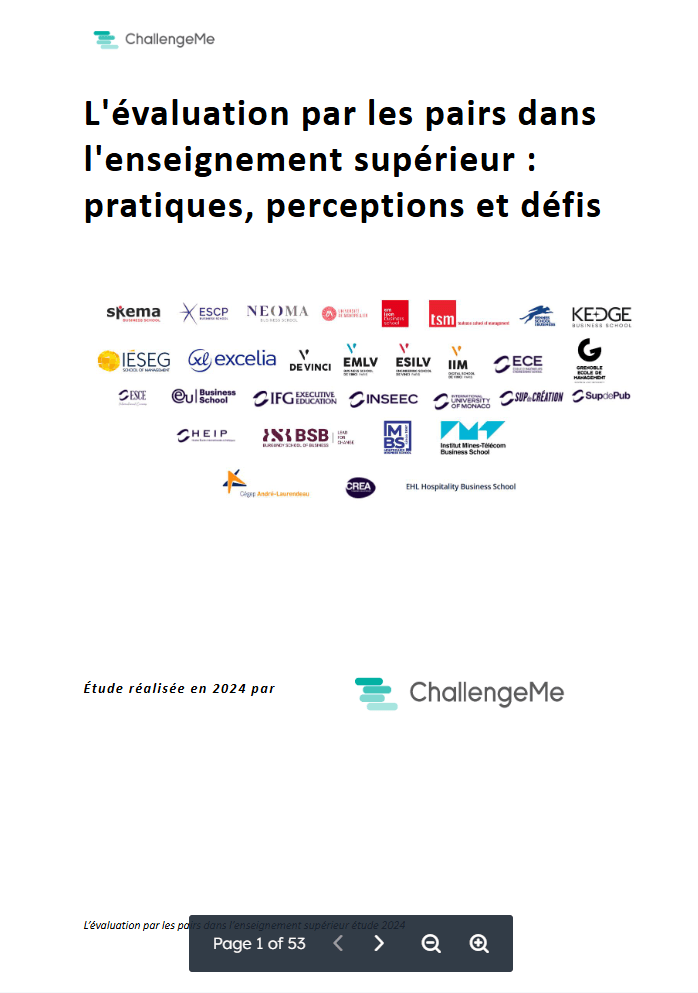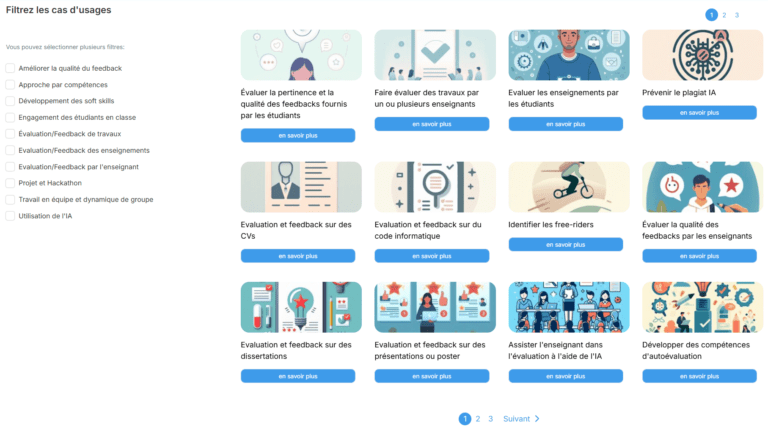In teaching, the marking and assessment of work is an essential part of teachers' day-to-day work. However, this process involves numerous decisions, including assessing the quality of content, managing grading criteria, and sometimes taking account of students' individual circumstances. This constant chain of choices can quickly lead to decision fatigue, with consequences for the quality and fairness of assessments.
The effects of decision fatigue on correction
Studies show that decision fatigue can influence the quality of teaching work, particularly when correcting a large volume of copies. These include:
Inconsistency in grading, with teachers becoming stricter or more lenient as their mental workload increases.
Tired teachers are more likely to grade inconsistently, being stricter or more lenient as their mental load increases. This variability can affect the fairness of assessment and the educational experience of students.
Correction bias, with a tendency to favor the simplest solution, such as assigning an average score without in-depth examination.
Studies show that, like judges, teachers are more likely to make more balanced and considered decisions when they are rested. On the other hand, after several hours of correction, the tendency to favor the simplest solution (such as awarding an average grade without in-depth examination) becomes stronger.
Procrastination and delays in correction in the face of cognitive overload.
Faced with cognitive overload, teachers may postpone grading, especially when faced with a large volume of work or copies that require special attention. This can lead to additional stress and delayed feedback for students.
Strategies to reduce decision fatigue
Faced with decision fatigue, teachers can implement various strategies to preserve their energy and efficiency when assessing work.
Firstly, by establishing clear routines, both in the classroom and in their personal organization, teachers can reduce the number of decisions they have to make on a daily basis. Establishing a fixed schedule for marking sessions, for example, can help structure work and boost efficiency.
The use of checklists and predefined criteria is also an excellent way of automating part of the grading process. Evaluation grids are particularly useful for focusing on the most qualitative aspects of work, while ensuring fair and consistent assessment. The organization of resources is another important lever. Having an efficient filing system for course materials, work samples and grading scales can save teachers valuable time and reduce the mental burden of searching for information.
Rather than correcting a large number of copies all at once, it's better to split up the tasks and divide the work into several shorter sessions. This maintains optimum concentration and reduces fatigue.
Collaboration with peers is another valuable strategy. By working with colleagues to harmonize assessment practices, share marking tasks or set up peer assessment, teachers can reduce their individual workload and benefit from valuable support.Finally, taking care of oneself is essential to maintaining one's energy and ability to make decisions. Taking care of one's overall well-being, by taking regular breaks, exercising and maintaining a balance between professional and personal life, is essential to avoid burnout.

Focus on peer review
Peer evaluation is a particularly interesting strategy for reducing teacher decision-making fatigue, while offering numerous pedagogical benefits.
Peer assessment consists in having students' work assessed by their peers, according to criteria defined by the teacher. This can take various forms: qualitative feedback, where students comment on the strengths and areas for improvement of their peers' work; criterion-referenced assessments, where students mark work according to an evaluation grid provided by the teacher; or comparative rankings, where students have to rank their peers' work from best to worst.The teacher plays a key role in this process. He or she defines the framework and objectives of the assessment, trains students in the process, and then supervises the peer assessment process. Their expertise is essential in guiding students and guaranteeing the quality of the assessments.
In addition to lightening the correction load for teachers, peer assessment offers numerous pedagogical advantages. It empowers students and strengthens their commitment to the learning process. It enables them to receive more feedback, from a variety of sources, which enriches their experience. It also develops key skills such as critical thinking, communication and collaboration, which will be invaluable in their future professional lives.Peer assessment also fosters a better understanding of expectations and evaluation criteria. By putting themselves in the evaluator's shoes, students become aware of the requirements and can better direct their own efforts. This creates positive emulation within the group and strengthens cohesion.
There are a number of good practices to follow if peer assessment is to be a success. It's important to provide students with clear instructions and precise evaluation criteria, and to train them to give constructive and respectful feedback. It's best to start with simple exercises before moving on to more complex tasks, and to alternate the roles of evaluator and evaluated so that each student can experience both postures. Some digital tools, such as the ChallengeMe platform, can facilitate the implementation and monitoring of peer assessment, by automating the distribution of assignments, the collection of feedback and the management of grades. By adopting peer assessment in a structured and thoughtful way, teachers can not only reduce their own decision fatigue, but also foster the development of essential skills in their students, for a richer and more stimulating learning experience. It's a win-win strategy, combining teacher well-being and student success.
Conclusion
Decision fatigue is a major issue for teachers, who are constantly juggling multiple tasks and responsibilities. Assessing work, in particular, can quickly become a burden and detract from the quality of teaching.
Fortunately, there are many strategies for reducing this fatigue and optimizing the assessment process. From setting up routines to using digital tools, collaborating with peers and splitting up tasks, teachers have a veritable toolbox at their disposal to preserve their energy and efficiency.
Peer assessment, in particular, appears to be a particularly promising solution. By involving students in the assessment process, it not only reduces teachers' workload, but also develops valuable skills in learners. Empowerment, critical thinking, communication... The pedagogical benefits are numerous and contribute to a richer, more stimulating learning experience.
Of course, implementing these strategies requires a certain initial investment. It takes time and energy to rethink practices, train students and adjust systems. But in the long term, the benefits are undeniable, for teachers and learners alike.
So why not take the plunge? By adopting a gradual, structured approach and drawing on the tools and resources available, you can transform your assessment experience. Gone are the days of fatigue and stress, replaced by a more serene, effective and fulfilling practice!
Don't hesitate to explore the different avenues mentioned in this article, to exchange ideas with your colleagues and to learn about new pedagogical approaches. Every little step counts, and will bring you closer to a more balanced and satisfying daily life. And if you'd like to go further in implementing peer assessment, don't hesitate to check out solutions like ChallengeMe. Thanks to their advanced functionalities and personalized support, these tools can save you precious time and greatly facilitate the deployment of this type of system, giving you the tools you need to reinvent your assessment practice.
So, are you up for the challenge?





